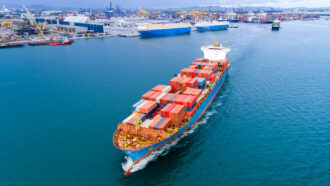Cool Jobs: Planet protectors
Scientists develop new technologies that will make future cities more sustainable
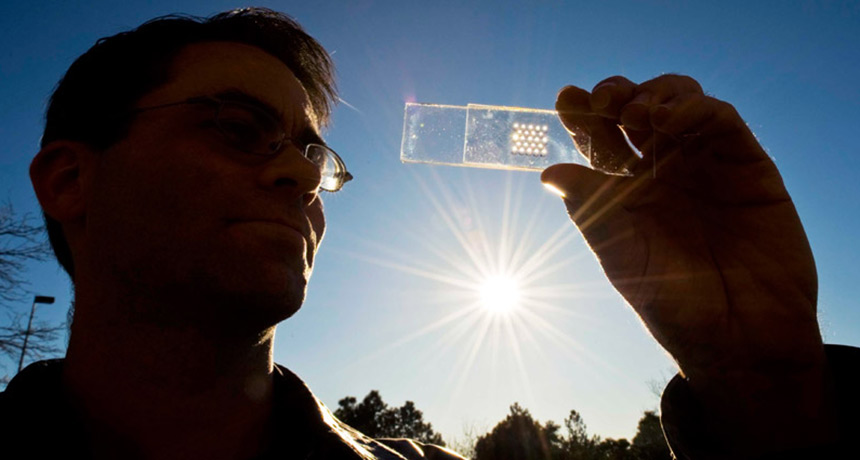
Greg Nielson holds a smattering of solar glitter, tiny cells that harness the sun’s energy and could one day power everything from laptops to lights.
Photo courtesy of Sandia National Laboratories
What will the future bring? It’s impossible to know for sure, but a number of people are imagining some pretty amazing changes. Many of these forward-thinkers are working to make the future more sustainable. They envision a world where people would live in ways that don’t use up resources and that allow humans and nature to comfortably coexist.
What might this future look like? Here’s a peek at what some scientists are working toward.
Leafy walls
As you walk down a city street, a light breeze rustles the leaves that cover the walls of buildings. Birds chirp, insects buzz, and up ahead someone stands on a scaffold, harvesting grapes. High on a rooftop, a meadow of native grasses waves in the wind. Down on the ground, trees shade the bike path and pedestrian walkway that you take to get home from school.
In this community, plants, animals and the food we eat would be just as much a part of the city as its buildings.
Such cities don’t yet exist. But several architects — people who design buildings or, in the case of landscape architects, outdoor spaces — have such cities in mind. Among them are Susan Loh at Queensland University of Technology in Brisbane, Australia, and Gabrielle Fladd of Design Ecology in San Francisco.
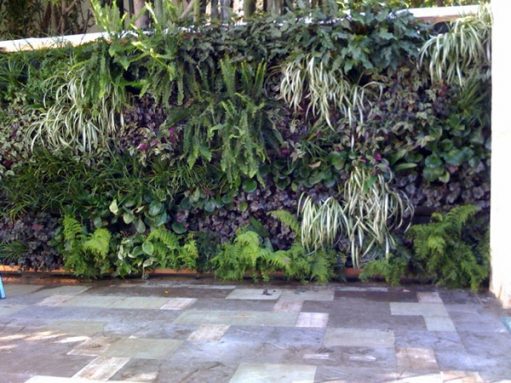
Photo courtesy of Design Ecology
In the past, building architects and landscape architects worked separately. Increasingly, though, they are joining forces. And landscape architects no longer focus just on the ground. These days they are also growing plants up — straight up the sides of buildings. These are “living walls,” and the plants they contain must be chosen carefully.
“It is important to select plants that can thrive in the place the wall is to be built,” explains Loh. “This could mean that they are native to the area or are able to grow well in that particular climate and location.”
Living walls also provide important habitat for animals. “We use plants that provide food and shelter for specific species of critters,” says Fladd — “especially butterflies, birds and native bees.”
Today, most living walls are added onto existing buildings. Construction crews attach a gridlike support system on the outside of a building’s walls. But first workers apply a waterproofing layer over the existing wall. This prevents water — piped in plastic tubing along with nutrients right to the plants’ roots — from damaging the building. Then the support system is installed. Now it’s time to invite the new leafy residents.
Arranging the plants is Fladd’s favorite part. “I get to combine nature and art, painting pictures in the landscape while incorporating ecology and natural systems.” Ecology is the study of how organisms interact with each other and their environment, and the living walls provide new places for life to mingle. Looking at a living wall from a distance really is like looking at a painting. Swirls of color turn an ordinary wall into a thing of beauty.
Loh’s research shows that living walls do much more than beautify the landscape and provide habitat for animals. When planted in areas that are free of vehicle traffic, living walls can be used to grow food. The plants also remove carbon dioxide and other pollutants, cleansing the air that people breathe. If the front of the New York Public Library were covered with a living wall, it would convert enough carbon dioxide into oxygen for 256 people each year — and that’s just one side of one building!
Living walls also keep buildings from getting too hot in summer, cooling the side exposed to direct sunlight by up to 10 °C. That can greatly reduce the need for costly air conditioning. And these leafy structures can even help cool the air outside: When water evaporates from the leaves, the moisture carries away some heat with it. Tests in “urban canyons” — city streets with tall buildings on both sides — show that living walls can cool the area between buildings by 8 °C to 11 °C.
Explains Loh, “Cities of the future could be great places to live in with good air quality, comfortable temperatures, clean water, [an] abundant supply of fresh food and plenty of nature around you.”
Water-wise
You’re still a few blocks from home, and with all that food growing on outdoor walls, your stomach starts grumbling. You pop into a market for a snack. Chocolate sounds good, but then you notice it doesn’t have a label for good water stewardship. That likely means it took a lot of water to produce the candy. Maybe you can find a more environmentally friendly snack. Bingo! There’s an apple from a local rooftop garden, watered with little more than rainfall.
This is what Arjen Hoekstra, a water researcher at the University of Twente in Enschede, the Netherlands, hopes to one day see. Hoekstra used his background in engineering and interest in water to pioneer a new field of study that examines how water used in the manufacturing of foods and products affects the water supply. He hopes his research will ensure a future with plenty of water.
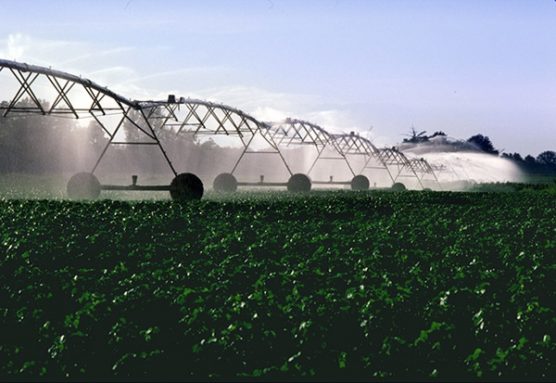
Photo courtesy of the Water Footprint Network
Although 70 percent of the planet’s surface is covered with water, about 96 percent of that is saltwater, which most land plants and animals can’t use. Land-based life relies on freshwater, or unsalty water. Only about 4 percent of the planet’s total water supply is freshwater. And more than half of that is locked up in glaciers and polar ice caps. That leaves only about 1 percent of the planet’s total water supply as fresh, usable water.
In many parts of the world, rivers have begun to run dry. People are removing too much water from rivers and lakes, leaving nothing but a dry riverbed for part of the year. The only way people can have a future with plenty of water is to limit its unnecessary use. Hoekstra developed what he calls the “water footprint” as a guide to help people do just that.
How much water do you use? The first things that come to mind are probably taking a shower, brushing your teeth or flushing a toilet. But these activities represent a tiny part of the human water footprint — only about 4 percent of what most city dwellers consume. The rest of the water use is tied up in producing the goods and services that people buy, says Hoekstra.
|
Product
|
Total WF
|
Green WF
|
Blue WF
|
Gray WF
|
|
1 kg chicken
|
4325 liters
|
82% (3546 l)
|
7% (303 l)
|
11% (476 l)
|
|
1 kg dry pasta
|
1849 liters
|
70% (1294 l)
|
19% (351 l)
|
11% (204 l)
|
|
1 kg cane sugar
|
1782 liters
|
66% (1176 l)
|
27% (481 l)
|
6% (107 l)
|
|
1 kg potatoes
|
287 liters
|
66% (149 l)
|
11% (32 l)
|
22% (63 l)
|
|
1 kg tomatoes
|
214 liters
|
50% (107 l)
|
30% (64 l)
|
20% (43 l)
|
|
1 kg pork
|
5988 liters
|
82% (4910 l)
|
8% (479 l)
|
10% (599 l)
|
|
250 ml glass of milk
|
255 liters
|
85% (217 l)
|
8% (20 l)
|
7% (18 l)
|
|
100 g chocolate bar
|
1700 liters
|
98% (1666 l)
|
1% (17 l)
|
1% (17 l)
|
|
150 g apple
|
125 liters
|
68% (85 l)
|
16% (20 l)
|
15% (19 l)
|
|
Cotton for a
250 g T-shirt
|
2495 liters
|
54% (1347 l)
|
33% (823 l)
|
13% (325 l)
|
An everyday item’s water footprint (WF) — the amount of water used to produce the good — can be surprisingly high. The water footprint for 1 kg of pork is equal to a 10-hour-long shower with a full-flow showerhead. Credit: http://www.waterfootprint.org
For instance, one recent study by his group showed that it can take 170 to 310 liters of water to produce a single half-liter of a cola or some other soft drink. The water actually in the soda can accounts for much less than 1 percent of the total water used.
How is that possible?
Manufacturers can use any of three types of water. Hoekstra has assigned a color designation to each. He calls precipitation that falls as rain “green water.” “Blue water” is what gets pumped out of lakes, rivers and groundwater aquifers (or underground lakes). And Hoekstra refers to water polluted by the process of making products as “gray.” The total water footprint includes all three types of water: green, blue and gray.
Measured that way, a single hamburger uses 2,400 liters (634 gallons) of water! Most of its water footprint comes from growing crops used to feed cattle. That means green water — or rain — accounts for much of the hamburger’s total. But when crops are grown in a dry area, or during a drought, farmers will increase the contribution of blue water. And no matter how the crops were watered, runoff from fertilizers and pesticides pollutes nearby streams, increasing the gray portion — and the total water footprint.
That’s a lot of water for one burger!
So how big is your total water footprint? That depends on where you live. Most Americans use more than 2.8 million liters (740,000 gallons) of water each year. That’s more than an Olympic-size swimming pool can hold.
To help raise awareness of our water use (and misuse), Hoekstra started measuring the water footprints of all kinds of products, from cotton to coffee to beef. He believes that if we can see how much water goes into a product, we can make better decisions about which things to buy.
Hoekstra hopes that someday a water stewardship label will make it easier to choose items with smaller water footprints. And as companies start to reduce their footprints, the number of water-wise products available will increase.
In the meantime, you can reduce your own water footprint. As Hoekstra notes, “The single best thing to do is eat less meat.”
Cutting the cord
Still munching on your apple, you reach home and grab your e-reader-of-the-future from a sunny windowsill. Its casing — everything except the screen —might glitter faintly in the bright light. You settle down to read your favorite novel — or maybe your textbook — happy to see that the battery is fully charged.
Those tiny, sparkly dots are no ordinary glitter. They are miniature solar cells. Each converts a small amount of sunlight into electricity that travels along a network of wires, eventually reaching — and recharging — the device’s battery. This unit needs no cords, no power plants — just light.
This cordless future might soon become reality thanks to Greg Nielson at Sandia National Laboratories in Albuquerque. As a microsystems engineer, he uses microscopic parts to create new products or systems.
Nielson focuses on applying his skills to harnessing solar energy. “The amount of power we can get from sunlight far exceeds any other energy source available,” he explains, “and that includes coal, natural gas, oil, nuclear and wind.”
Panels made of solar cells that convert sunlight into electricity are not new. But traditional solar panels are bulky and require large amounts of extremely pure silicon, a costly material used in many electronics. The size of these solar panels and solar cells can limit the number of places they can be used. And as silicon hogs, they tend to be very expensive.
That got Nielson wondering: What if he could make solar cells smaller? Could they still generate enough electricity to be useful?
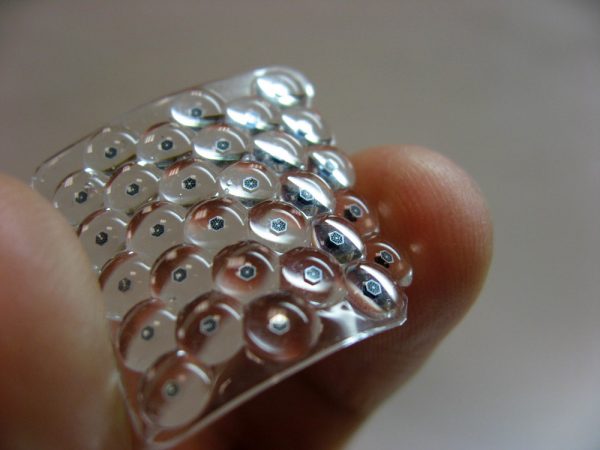
Photo courtesy of Sandia National Laboratories
Over the past six years, his team has worked to answer those questions. The result is “solar glitter.” These tiny cells are both thinner and smaller in diameter than traditional cells that convert sunlight into electricity. In fact, solar glitter is so much smaller that Nielson estimates the tiny cells use about one-thousandth the amount of silicon of a traditional, larger cell to generate the same amount of power.
Pretty amazing. But if they’re so small, how do they absorb enough sunlight? The secret lies in tiny lenses that sit just above the miniature solar cells, focusing the sun’s rays onto the glitter. If you have ever used a magnifying glass to focus light into a pinpoint, you can imagine how this works. (Fortunately, solar glitter doesn’t catch fire!)
Nielson imagines a world in which solar glitter powers everything from cell phones and laptops to lights. Tiny smatterings of solar glitter could be built into some types of glass, allowing windows to collect solar energy without obscuring your vision. Going camping? A tent covered in solar glitter could power lights for reading or keeping away the boogeyman after late-night ghost stories. For the glittered tent to work, scientists will need to find a battery or some other means to efficiently store the sun-generated electricity until night falls. But Nielson is confident that problem will be addressed once widespread solar power becomes a reality.
One thing that especially excites this engineer is the prospect of getting low-cost electricity to people around the world. Millions of people live in homes with no electric power. Solar glitter could allow these people to have light at night without relying on dangerous indoor oil lamps or wood-burning fires. Glitter solar cells might even power computers, which could bring a modern education to kids who currently learn in open-air schoolrooms that lack electricity. Hospitals and refrigeration for life-saving vaccines could one day be powered by the tiny cells.
“Being able to provide low-cost energy that [doesn’t hurt the] environment, around the world, that is just extremely exciting to me,” says Nielson. “It will be like the next energy revolution.”
After finishing a chapter on your glittered e-reader, you head out onto the rooftop to pick some tomatoes for dinner. There, in the branches of a potted tree, sings a little bird. You recognize it, but only from pictures. This is the first time you have seen one in the city.
In this sustainable world of the future, humans and nature might truly coexist.
Power Words (adapted from the New Oxford American Dictionary)
carbon dioxide A colorless, odorless gas produced when organic matter (including fossil fuels like oil or gas) is burned. Carbon dioxide acts as a greenhouse gas, trapping heat in Earth’s atmosphere. Plants convert carbon dioxide into oxygen during photosynthesis, the process they use to make their own food.
climate Long-term weather conditions for a particular area.
ecology A branch of biology that examines how organisms interact with each other and their environment.
evaporate To turn from liquid into vapor.
native Associated with a particular location; native plants and animals have been found in a particular location since recorded history began.
organism An individual animal, plant, or single-celled life form.
pollutant A substance that dirties air or water.
solar cell A device that converts solar energy to electricity.
stewardship Taking care of something, such as the environment.
sustainability To use resources in a way that they will continue to be available in the future.
Word Find (click here to print puzzle)
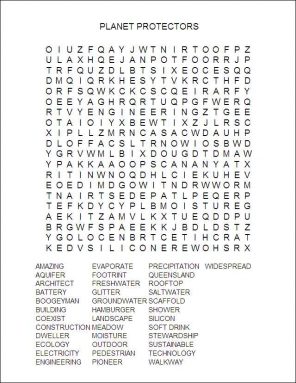
This is one in a series on careers in science, technology, engineering and mathematics made possible by support from the Northrop Grumman Foundation.







